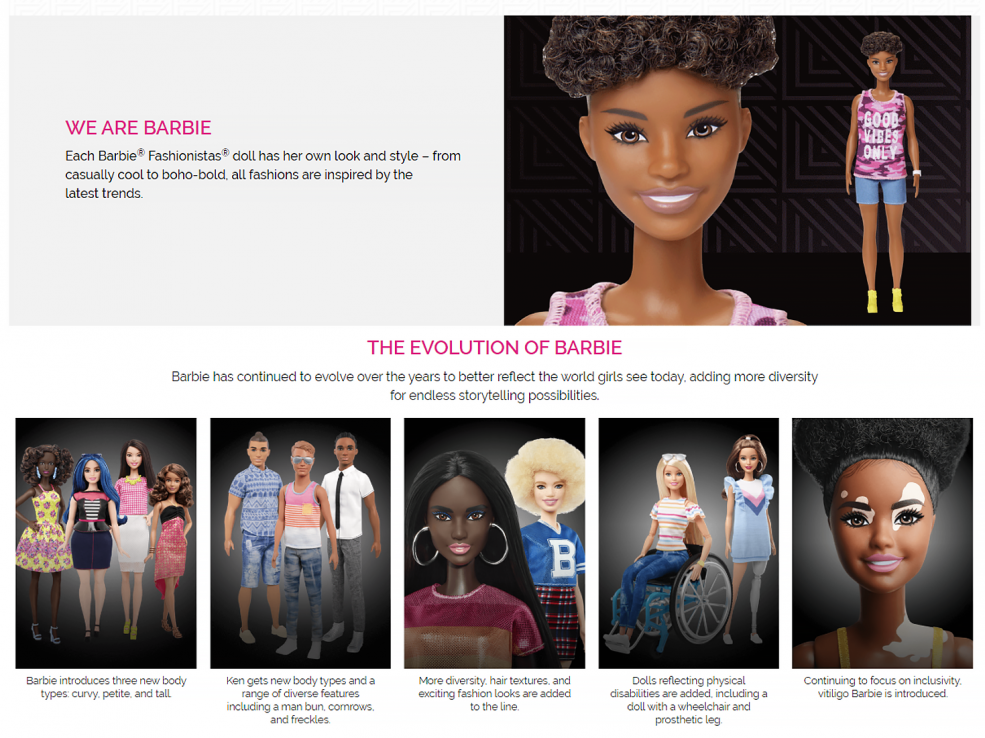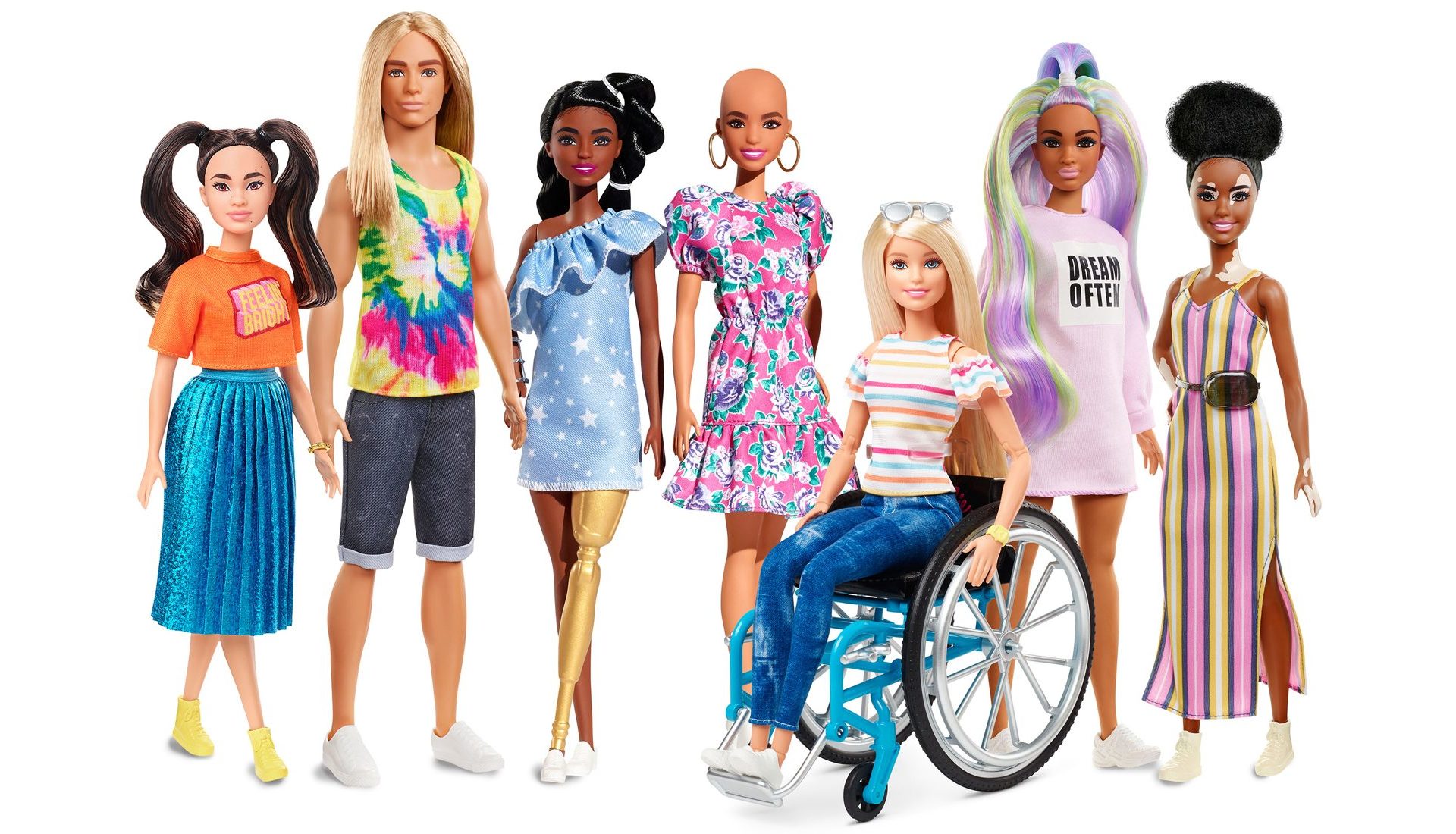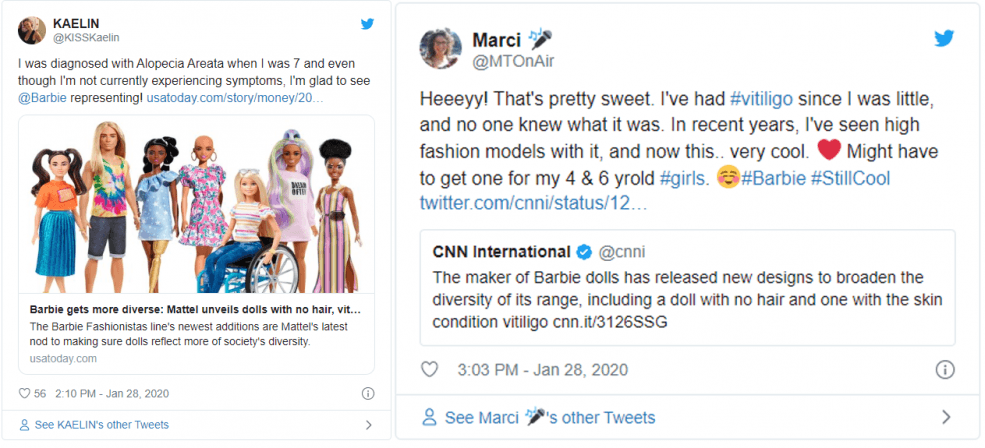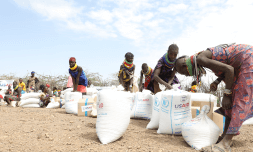In an effort to appeal to more consumers, Mattel Toys and Games Inc. has expanded its line of inclusive Barbie dolls, adding ones with vitiligo, a prosthetic limb, and no hair.
Last year, Mattel introduced a range of gender-neutral dolls to reflect our culture, ‘as the world continues to celebrate the positive impact of inclusivity.’
Now, in an effort to further appeal to a wider range of consumers and push for more diversity in the industry, the toys and games company has once again added to its Fashionista line.
One doll has a prosthetic limb. Another is bald to show the realities of medically induced hair loss. And another’s natural, textured hair is tied up to show her vitiligo – a unique look you might recognise if you’ve seen supermodel Winnie Harlow strutting down the runway, who’s famous for raising awareness about the condition which causes skin pigment to deteriorate in patches.
‘I think this is the best thing that could happen for children,’ said president of the American Vitiligo Research Foundation, Stella Pavlides. ‘It shows them that if there are dolls that look like them, they’re okay.’

Unveiled on Tuesday, the dolls are part of Mattel’s latest bid to ditch Barbie’s image as an impossibly skinny ‘icon’ blamed for altering young people’s ideas of what we should look like. Certainly a far-cry from the overwhelmingly white, domestic figures that made their first appearance in 1959, Mattel has hailed its new collection as the ‘most diverse one out there.’ With more skin tones, hair types and body shapes than ever before, Fashionista 2020 provides a ‘multidimensional view of beauty and fashion,’ as the company puts it.



















